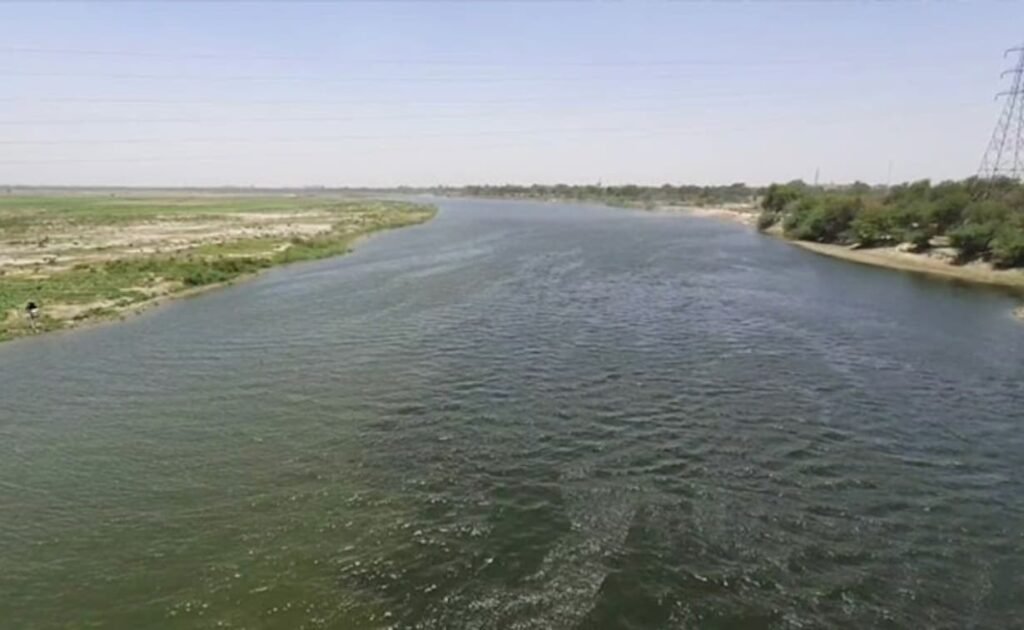Delhi to Become the Largest City on the Bank of the Yamuna River
Delhi, the capital city of India, is set to achieve a significant milestone as it emerges as the largest city situated along the banks of the Yamuna River. This development marks a crucial moment in the city’s history, with implications for its environment, infrastructure, and cultural landscape.
The expansion of Delhi along the Yamuna River’s banks underscores the city’s growing urbanization and population influx. As more people settle along the riverfront, there arises a pressing need for sustainable development and environmental conservation measures.
The Yamuna River holds immense cultural and historical significance in Indian civilization. Its banks have been home to ancient settlements, witnessed grand historical events, and served as the backdrop for spiritual and cultural activities. The recognition of Delhi as the largest city on the Yamuna’s banks reaffirms the river’s importance in shaping India’s past, present, and future.
Despite its historical and cultural significance, the Yamuna River faces numerous challenges, including pollution, encroachment, and unsustainable development. As Delhi expands along its banks, there arises a critical responsibility to address these challenges and ensure the river’s rejuvenation and preservation for future generations.
Government authorities, environmental organizations, and community stakeholders must collaborate to implement effective measures for the conservation and restoration of the Yamuna River. Initiatives such as riverfront development projects, pollution control measures, and public awareness campaigns play a crucial role in safeguarding the Yamuna’s ecological integrity and cultural heritage.
The transformation of Delhi into the largest city on the Yamuna’s banks represents a significant chapter in the city’s evolution. It presents both opportunities and challenges for sustainable development, environmental conservation, and cultural preservation. As Delhi embraces this milestone, it must prioritize the responsible stewardship of its natural and cultural heritage for the benefit of present and future generations.
Why this News is Important:
Significance of Delhi’s Expansion Along the Yamuna River
The news of Delhi becoming the largest city on the banks of the Yamuna River carries significant implications for various stakeholders.
Urban Development and Infrastructure: This development highlights Delhi’s rapid urbanization and the need for sustainable infrastructure to accommodate its growing population.
Environmental Conservation: The expansion along the Yamuna River underscores the importance of environmental conservation efforts to protect the river’s ecosystem and biodiversity.
Cultural Heritage: Delhi’s proximity to the Yamuna River is integral to its cultural heritage, making it imperative to preserve and promote the historical significance of this relationship.
Water Management: With Delhi’s expansion along the river, effective water management strategies become essential to ensure sustainable use and conservation of Yamuna’s resources.
Tourism and Recreation: The development of riverfront areas can enhance tourism and recreational opportunities, contributing to the city’s economic growth and cultural vibrancy.
Historical Context:
Evolution of Delhi Along the Yamuna River
Delhi’s history is deeply intertwined with the Yamuna River, dating back to ancient times. The river has served as a lifeline for settlements, providing water for agriculture, transportation, and sustenance.
Over the centuries, Delhi has witnessed numerous transformations, with the Yamuna River playing a central role in its growth and development. From the ancient settlements of the Indus Valley Civilization to the grand Mughal capital of Shahjahanabad, the river has shaped the city’s cultural and architectural landscape.
However, rapid urbanization and unchecked development have taken a toll on the Yamuna River, leading to pollution, encroachment, and degradation of its ecosystem. Despite these challenges, the river continues to hold immense cultural and historical significance, serving as a symbol of Delhi’s rich heritage.
Key Takeaways from “Delhi to Become the Largest City on the Bank of the Yamuna River”:
| Serial Number | Key Takeaway |
|---|---|
| 1. | Delhi is set to become the largest city on the Yamuna’s banks, marking a significant milestone in its urban development. |
| 2. | The expansion along the Yamuna River underscores the need for sustainable development and environmental conservation measures. |
| 3. | The historical and cultural significance of the Yamuna River in Indian civilization reaffirms the importance of its preservation and rejuvenation. |
| 4. | Collaborative efforts from government authorities, environmental organizations, and community stakeholders are crucial for addressing the challenges facing the Yamuna River. |
| 5. | The transformation of Delhi into the largest city on the Yamuna’s banks presents opportunities for tourism, recreation, and economic growth, but it also necessitates responsible stewardship of the river’s resources. |
Important FAQs for Students from this News
Q1: What is the significance of Delhi becoming the largest city on the banks of the Yamuna River?
A: Delhi’s expansion along the Yamuna River underscores its rapid urbanization and the need for sustainable development measures.
Q2: What are the challenges facing the Yamuna River?
A: The Yamuna River faces pollution, encroachment, and degradation of its ecosystem due to rapid urbanization and unchecked development.
Q3: How can stakeholders address the challenges facing the Yamuna River?
A: Collaborative efforts from government authorities, environmental organizations, and community stakeholders are crucial for implementing effective conservation measures.
Q4: What historical significance does the Yamuna River hold in Indian civilization?
A: The Yamuna River has been integral to ancient settlements, served as the lifeline for historical capitals like Shahjahanabad, and continues to hold cultural importance in Indian civilization.
Q5: What are some potential benefits of developing riverfront areas along the Yamuna River?
A: Developing riverfront areas can enhance tourism, recreation, and economic growth, contributing to the cultural vibrancy of Delhi.

